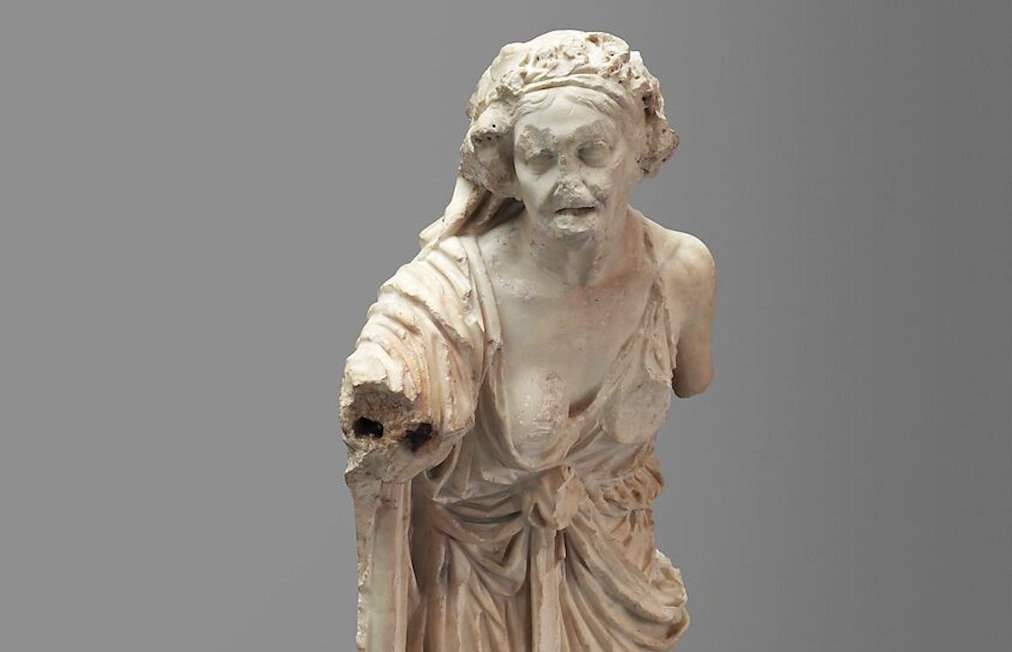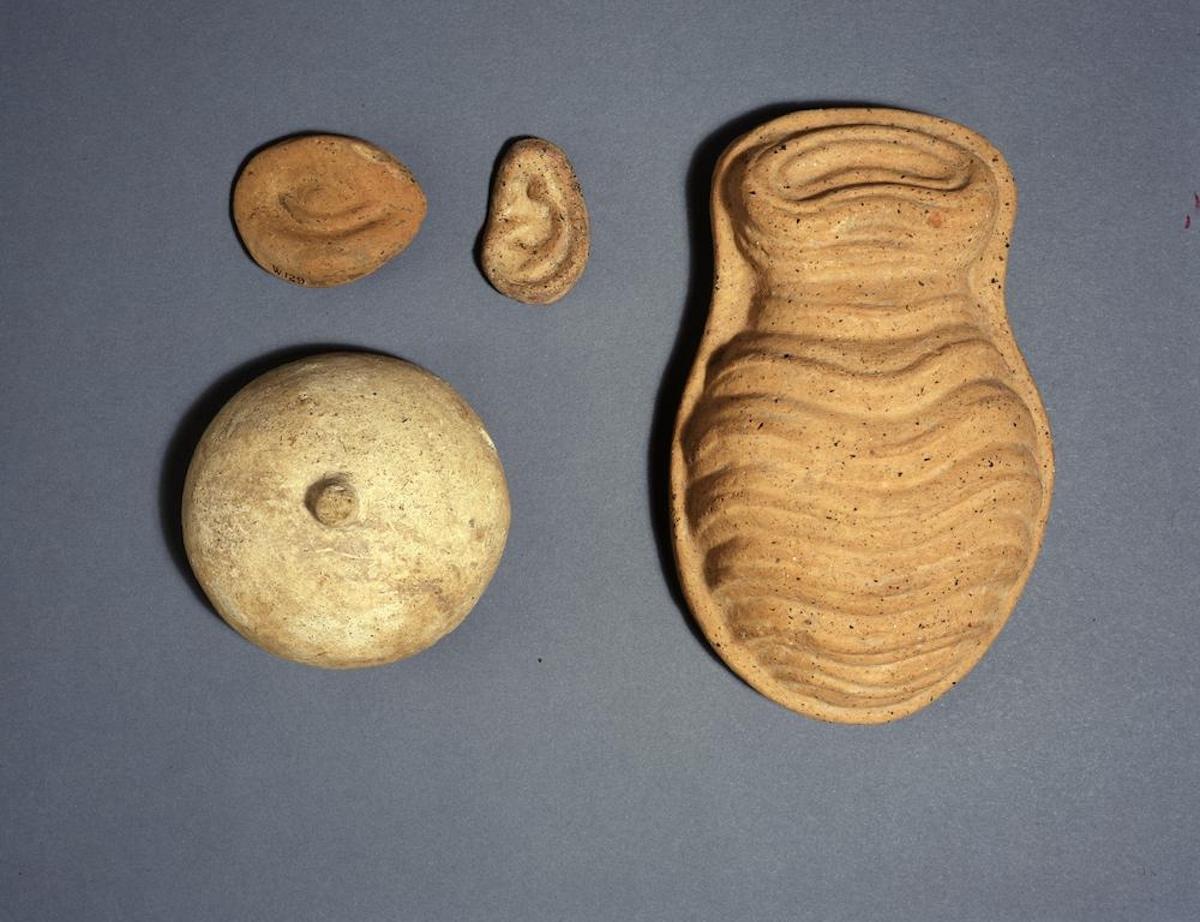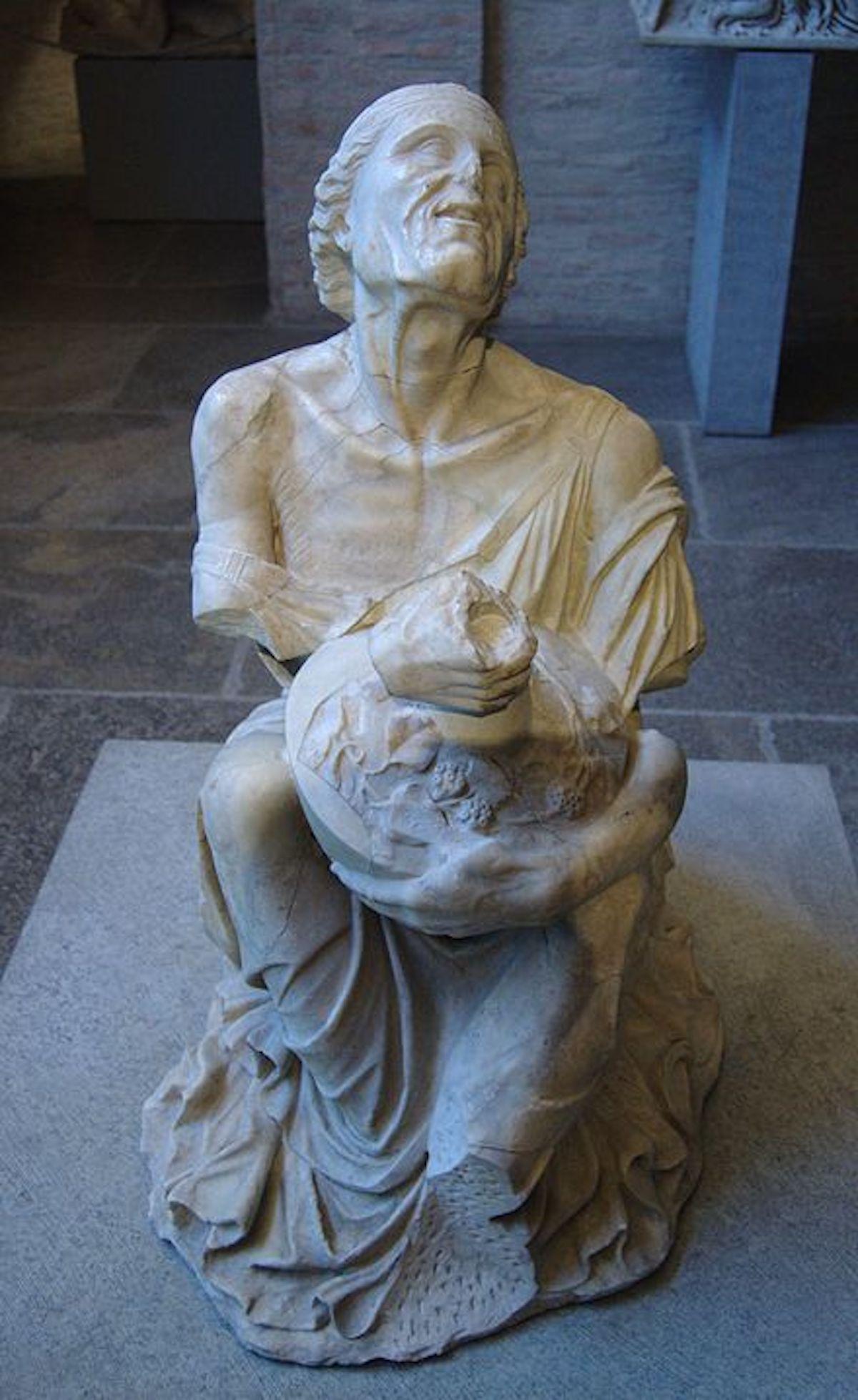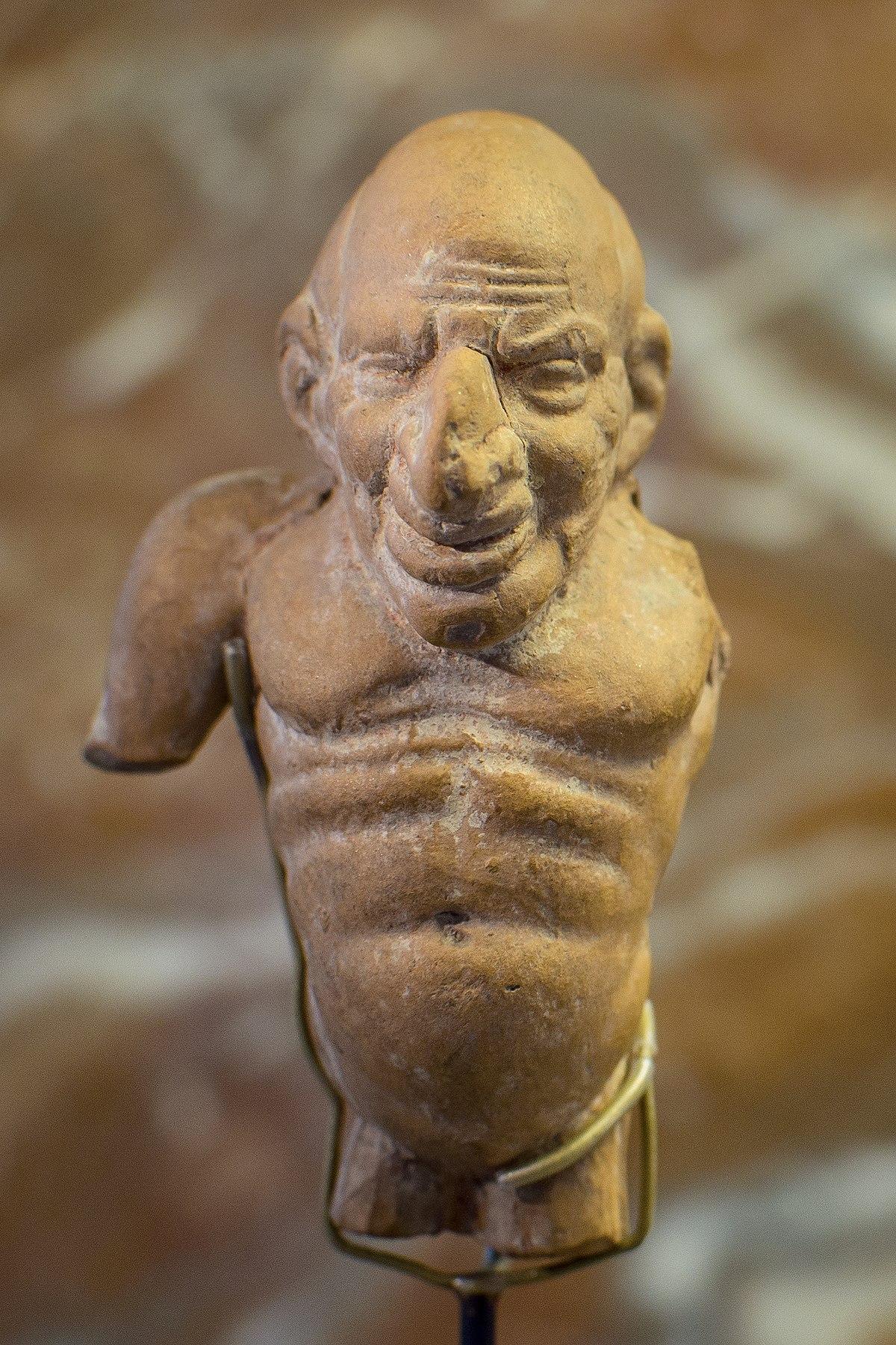Many terracotta figurines from Greece have been found that showcase a variety of physical disabilities and ailments. There have been examples of figures depicting disabling deformities such as Pott’s disease, acromegaly, and leontiasis among other non-identifiable disabilities. While one might anticipate that such figurines were perhaps used as votive offerings to gods of healing much like ex voto terracotta body parts dedicated in the hopes of inviting health and healing, the majority of such figures come from non-votive contexts in domestic and urban spaces. Scholarly consensus has concluded that these figures, while certainly depicting plausibly lived realities of disabled individuals in antiquity, were thus not used to invoke divine healing but rather served apotropaic purposes to act as good luck charms for warding off ill fates.

Statue of the so-called “Old Market Woman.” detail, Roman copy of a Greek Hellenistic original, ca. 14-68 CE.
The ancient Greek body is perhaps one of the most recognizable and influential forms in art history. The idealized and graceful figures crafted by Greek masters during the Classical and Hellenistic periods (ca. 480 – 31 BCE) are instantly recognizable and have influenced centuries of artistic creation from the Romans through the Renaissance and down to the modern day.
Hallmark figures such as the Nike of Samothrace (2nd century BCE) and the Aphrodite of Knidos (ca. 4th century BCE) are lauded for the elegance and fluidity of their figures while other examples such as the Riace bronzes (5th century BCE) are taken as pinnacles of the technical mastery required to translate the human form to freestanding metal. While much of the art produced in ancient Greece ascribes to the idealized, youthful forms like those just mentioned, there are also pieces that express more realistic depictions of what it means to inhabit a human body, in a time when the processes of aging and death were often much more difficult than what many of us experience in modernity.

Terracotta anatomical ex voto objects. 3rd-1st centuries BCE.

Staute of the so-called “Old Drunkard.” Roman copy of a Greek Hellenistic original, 1st-2nd centuries CE.
Images in larger-scale media are also known and offer much more detailed examinations of the non-idealized human condition. The so-called ‘Old Drunkard’ statue is one such example. Surviving today in two Roman marble copies of the Hellenistic original, the statue depicts a seated old woman clutching a wine jug. The woman sits on the ground, her clothing dripping down off her shoulders to expose a boney and thin-skinned frame beneath with collarbones, shoulder blades, and spine all starkly prominent. Her face and neck are similarly wizened with wrinkles and thick vein lines running across her skin, and her expression is one of drunken stupor as she gazes, open-mouthed, into a far distance.
This pair of statues has sparked much scholarly debate over the decades and true consensus still evades us, though many scholars of ancient art have argued that the figure of the woman possibly pointed to fears of social transgressions and socially deviant behaviors surrounding alienation of aged persons and public drunkenness.

A terracotta figurine of a hunched back figure, possibly with acromegaly, from Smyrna. 100 BCE – 100 CE.
Another marble statue of an old woman shows similar attention to the aged body. This figure, too, survives as a Roman copy but the details of the image were preserved to highlight the realities of old age. Wrinkles cover the woman’s face, and the bones of her chest are clearly apparent as her gown slips down her thin frame at the shoulders and front. This woman is thought to be depicted as on her way to participate in a Dionysian festival – a conclusion aided by the presence of ivy and the fine quality of her carved clothing – but she still represents a lived reality much removed from the idealized youthful grace of figures that adorned graves, temples, and most public spaces.
Both of these female statues certainly carry much more complicated interpretive baggage than can be covered here. But what is important about them as well as the terracotta figurines are that they showcase a time in the history of Greek art when artists expanded their cultural repertoire of images and subjects to include accurate representations of aging and even physical disabilities that were present in society. Images such as these have certainly played no small part in contributing to our ever-expanding understanding of how people lived thousands of years ago and how, in fact, they were often not so different from how we live today sometimes




























